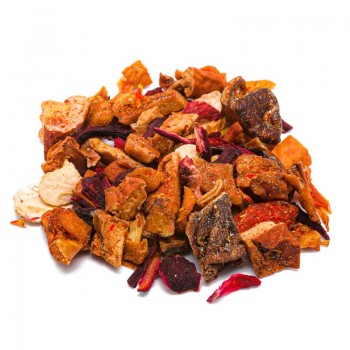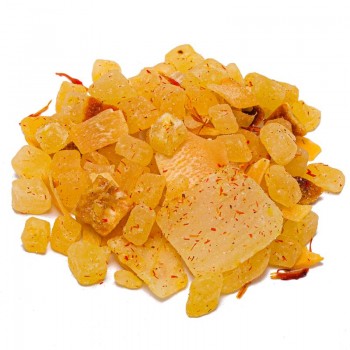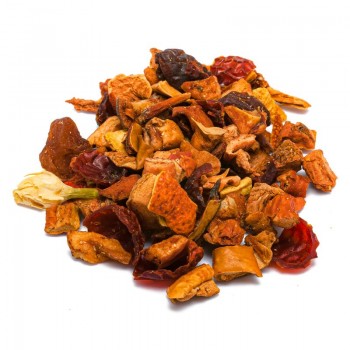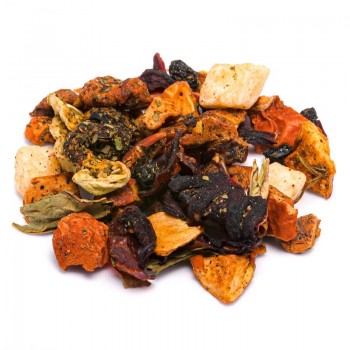An intensely aromatic blend with a sweet taste, which combines apple and kiwi pieces, cherries, cranberries and coconut in the infusion, for one of our most popular infusions. Excellent as a cold infusion, naturally sweetened thanks to the coconut which makes it slightly sweet and suitable for all ages. It goes well with desserts and fruit, it's a pleasure after meals, especially in summer served fresh to replenish precious liquids and nutrients. Also perfect in winter, on gray days to evoke the warm and exotic aromas of the summer. This refined blend of dried fruits is further enriched by juicy cranberries and apple pieces.
Cherry, kiwi and coconut infusion: properties and benefits
The union of these ingredients such as cherry, kiwi and coconut, creates a powerful drink, an acid-free blend. Useful as a pleasant supply of diuretic and antioxidant micronutrients, and with properties of inestimable value for our body. The properties of the cherry include diuretic and slightly laxative actions, as well as antioxidants. Rich in anthocyanins and flavonoids, they promote the well-being of blood circulation and the purification of blood vessels. Its antioxidant property due to anthocyanins can also promote regular levels of uric acid in the blood.
Also for these properties, cherries were historically used for the treatment of rheumatic pains and to soothe muscle soreness - as a natural remedy for inflammation in the body. It is a fruitrich in vitamin C, A, protein, calcium, iron and can strengthen natural immunity. The kiwi is considered a precious fruit for its many vitaminic and purifying properties and for its iron supply. Together with the cherry, it increases the vitamin C levels of the infusion, also providing vitamin E and potassium. Contains polyphenols useful for protecting cardiovascular well-being and blood vessels, enhancing this aspect of the infusion. The kiwi infusion also contains elements useful for the well-being of eyesight, while the large contribution of vitamin C, useful for the immune system to fight flu and colds. We could also mention many other qualities of this fruit such as its anti-constipation abilities. An infusion of cherry, kiwi and coconut is, in fact, an excellent aid to counteract digestive irritations and promote correct intestinal transit. The addition of coconut to the infusion enhances its diuretic and slightly laxative properties, also adding minerals such as manganese, selenium, iron and potassium. The elements create a rich blend for our body, a source of well-being in the form of a sweet infusion.
Origins and History of cultivation
The blend contains several ingredients, each with its own story. Sweet cherries derive from a plant, the cherry tree, probably native to Asia Minor, between the Black Sea and the Caspian Sea. Naturally spread in Europe by birds, they were known by the ancient Greeks, perhaps the first to cultivate cherry trees, and by the Romans who continued to expand production. Cherries arrived in America with the English and Spanish colonists from the seventeenth century, and today there are many countries that produce cherries. These are plants for which pollination is essential, especially with honey bees, and two varieties of cherries must be planted in each orchard - estimating that it takes around 6 years for the tree to produce its first major harvest. In ancient mythology the fruit contains the elixir which gives the gods immortality; a widespread belief also in the East, where the cherry tree also represents fertility and femininity. The coconut palm is a plant probably native to the Indo-Malay area (Indo-Malaya).
It is now widespread and cultivated in tropical areas around the world, for its edible fruit, the coconut. It is the most economically important palm species, given that the coconut is a predominant crop of the tropics and considerable in the economy of many countries. The spread was perhaps caused by the fact that coconut fruits float easily, so they were dispersed by ocean currents and humans in different countries. Known for centuries, since the twentieth century it has been easier to import and spread coconut on the table, known for its nutritional richness. Today we find it in various forms. The coconut meat can be dried or eaten fresh; the liquid of the nut is obtained from it, coconut water, the copra, the dried kernel from which coconut oil is derived, one of the main vegetable oils. It can be gratediata to obtain coconut flakes.
The kiwi plant is native to China, and for this reason the ancient name was yang tao. It has been known for thousands of years, but was first brought to Europe in the eighteenth century, in France. It did not arouse particular interest, but in any case at the end of the 19th century kiwi plants were introduced in Europe and then in the United States. Its success is due to cultivations in New Zealand since 1904, where it was improved and cultivated in larger plantations, making the properties of the fruit known. Here it became the Chinese Gooseberries (Chinese gooseberry) for its sweet and sour taste. It wasn't until 1959 that it was named the kiwi, after New Zealand's small national bird (they're both brown and hairy). The New Zealanders have obtained larger fruits through a particular selection, among which the best known is the Hayward green-fleshed kiwifruit, developed in 1928. There are Chinese yellow-fleshed varieties, and others with smooth flesh. They are highly valued because once harvested, kiwis can be stored in a cool, dry place for about eight weeks. From the mid-twentieth century, the kiwi began to be exported to Europe and the Americas as an exotic fruit, and today it has become a popular fruit grown all over the world – in Italy particularly in Sicily.
Plant and fruit
The components of the infusion are many, and the mix includes plants and fruits from different sources: apple, sweetened coconut, coconut oil, natural flavouring, kiwi, cherry, cranberries . Cherry is a fruit that comes from the cherry tree to the genus Prunus. Belonging to the Rosaceae family, the plant is native to temperate regions. Depending on the species, the production of these fruits includes sour cherries (Prunus cerasus) and sweet cherries (Prunus avium). Cherries are grown in all areas of the world with a temperate climate. The trees flower quite early in spring, and the cherry can be harvested in late spring, depending on the variety until August. The kiwi comes from a climbing vine of the Actinidia genus, which belongs to the Actinidia genus.
There are about fifty species of this genus, with a wide variety of fruits. The plant is grown on a trellis and gives diversified fruits according to the species; with yellow, orange or green flesh, with a smooth or hairy skin. Usually, the plant from which the fruit derives is Actinidia deliciosa (or Actinidia chinensis), but it can also be the fruit of Actinidia kolomikta and Actinidia arguta (the small mini kiwi with a smooth skin).
The kiwi usually does not tolerate temperatures below minus 12°C, except Actinidia kolomikta which resists the winter cold (up to -25°C) The coconut palm is Cocos nucifera, from the Arecaceae family. It has a slender, leaning trunk that reaches a height of 25 meters, with a graceful crown of giant leaves. The ripe fruits have an ovoid or ellipsoidal shape, and show a thick and fibrous skin. The single seed is what we know as a coconut. The interior with its abundant endosperm, composed of flesh and liquid, is enclosed by the hard shell. The fruits take a year to ripen. Coconut palms flourish best near the sea, where groundwater and abundant rainfall circulate.
The Malus domestica plant of the Rosaceae family is the one that gives the fruit of the apple. It is a tree native to Asia, now widespread throughout the planet. The fruits differ in colors and in many varieties: yellow, green, red apples, etc. The cranberry is one of several small plants in the genus Vaccinium (family Ericaceae). They can be plants with creeping or climbing stems, and bear their sour red fruits. These are round berries usually crimson red in color, which ripen in September. Among the species there are the American cranberry (V. macrocarpon), the small-fruited cranberry (V. oxycoccos) also in the territories of Northern Europe, and the mountain cranberry (V. vitis-idaea).
Nutritional values of cherry kiwi and coconut infusion
The mixture contains many nutritional elements, phenolic components, carotenoids and vitamin C, vitamin A, and vitamin E. It makes available mineral salts such as potassium, iron, phosphorus, manganese. Other active ingredients are anthocyanin polyphenols and natural sugars. How to use the ingredients in the infusion The infusion is obtained by placing about 3-5 grams of the mixture of cherry, kiwi and coconut in a cup (250 ml) with water at 100 °C. Leave to infuse for 10 to 12 minutes,


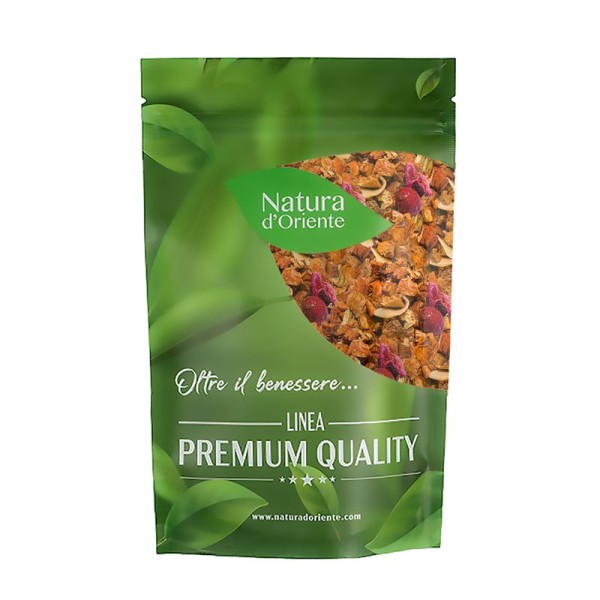








 No reward points for this product.
No reward points for this product.
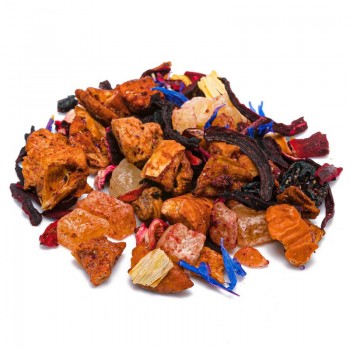
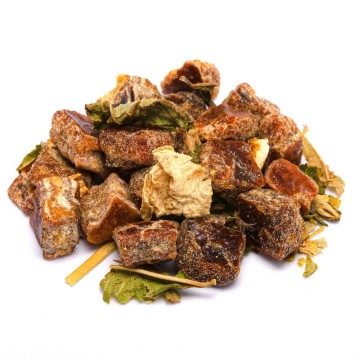
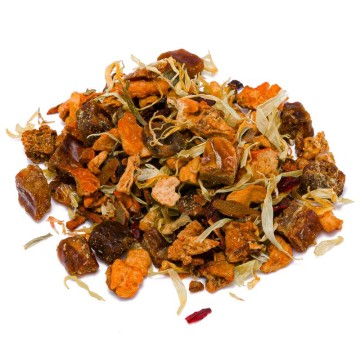
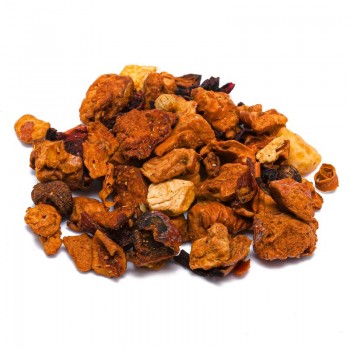
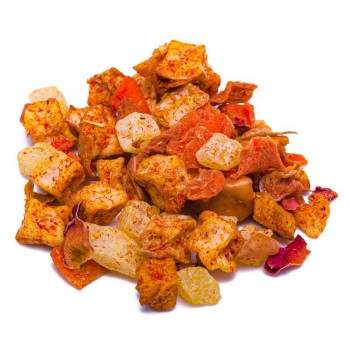
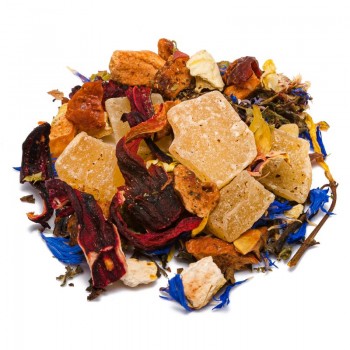
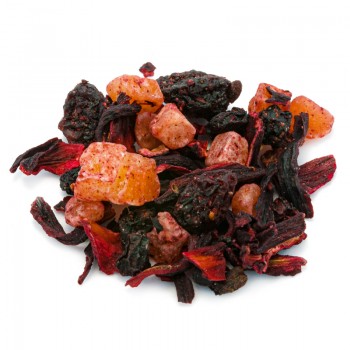
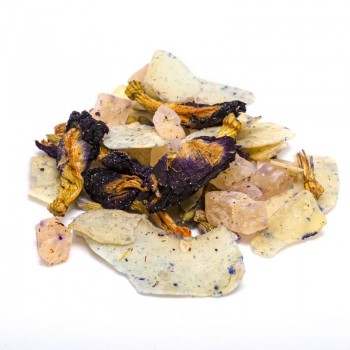
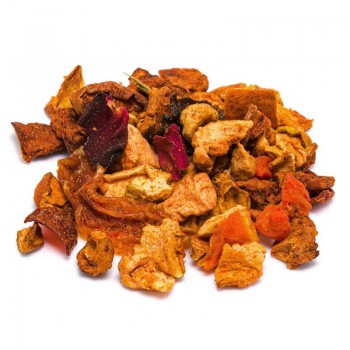
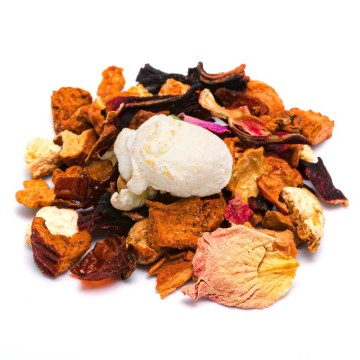
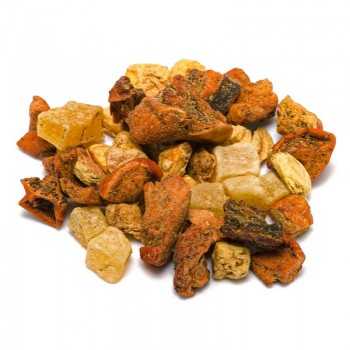
![infuso pesca melone [Natura d'Oriente]](https://www.naturadoriente.com/3535-home_default/infused-peach-melon.jpg)
